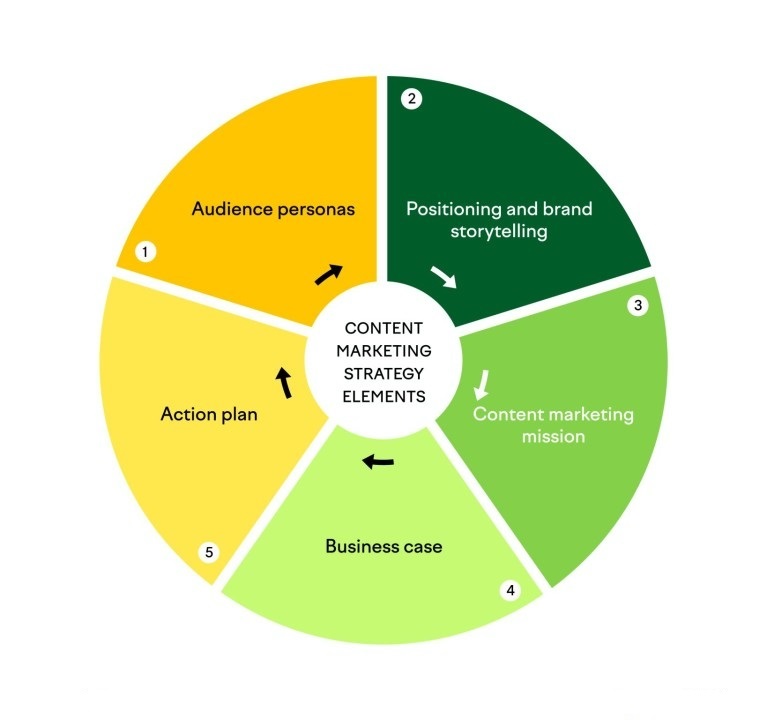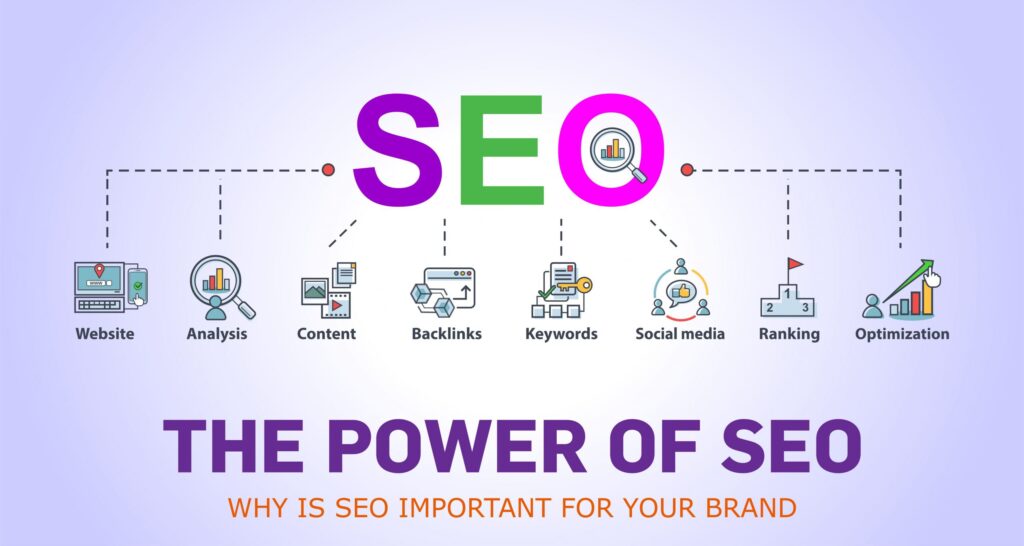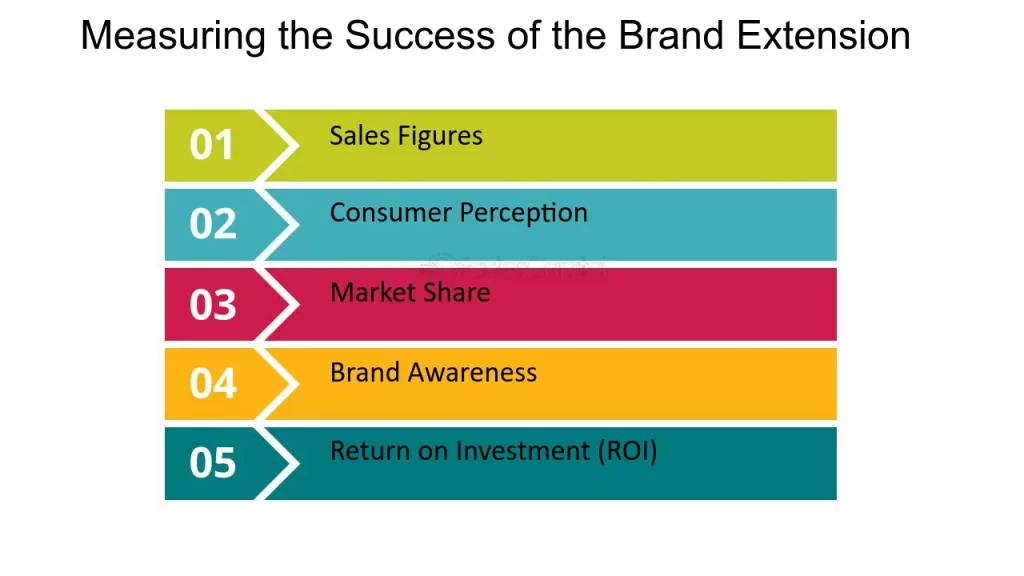In the evolving marketing realm, brands are constantly looking for innovative ways to connect with their target audience and leave a lasting impression. One such strategy that has gained significant traction in recent years is branded content. But what exactly is branded content? In this comprehensive guide, we’ll delve into the world of branded content, exploring its definition, purpose, and the impact it can have on modern marketing strategies.
Branded content can be defined as a form of marketing that focuses on creating and distributing valuable content that aligns with a brand’s values, vision, and mission. Unlike traditional advertising, which overtly promotes products or services, branded content takes a more subtle approach by telling stories, engaging emotions, and building authentic connections with the audience.
The primary purpose of branded content is to establish a strong bond between the brand and its target audience. It goes beyond mere sales pitches and instead aims to provide value, entertainment, or education to the consumer. By delivering content that resonates with the audience’s interests, desires, and values, brands can nurture brand awareness, foster customer loyalty, and ultimately drive business growth.
Branded content can take various forms, ranging from articles, blog posts, videos, podcasts, social media posts, and even live events. The content is often aligned with the brand’s core message, promoting its unique selling points more subtly and engagingly. Successful branded content campaigns seamlessly integrate the brand’s values and story into the content, making it relatable and memorable for the audience.
Understanding Branded Content:
Branded content refers to published media that aims to elicit an emotional response from the target audience. Unlike traditional advertising, branded content focuses on storytelling and highlighting a brand’s values, culture, vision, and mission. It provides businesses with the opportunity to build and nurture brand awareness, increase engagement, expand reach, and introduce the brand to new audience segments.
Branded content differs from traditional advertising in that it does not overtly focus on showcasing or talking about a brand’s products or services. Instead, it emphasizes the story behind the brand, its culture, and its values. Unlike traditional ads, branded content is not viewed as invasive and is willingly engaged with by consumers.
The Elements of a Branded Content Strategy:

A successful branded content strategy is built upon several key elements that work together to create a cohesive and impactful campaign. These elements are crucial in ensuring that the branded content resonates with the target audience, effectively communicates the brand’s values, and drives engagement and brand awareness.
Target Audience: One of the primary elements of a branded content strategy is the identification of the target audience. Understanding who the content is intended for allows brands to tailor their messaging and storytelling to align with the specific interests, needs, and preferences of their audience. By knowing their audience, brands can create content that speaks directly to them, establishing a deeper connection and increasing the likelihood of engagement and brand loyalty.
Brand Alignment: Another essential element is brand alignment. Branded content should authentically reflect the brand’s values, mission, and overall identity. It should seamlessly integrate the brand’s message into the content, ensuring that it remains consistent and in line with the brand’s overall marketing strategy. This alignment helps to reinforce the brand’s image and establish a cohesive brand narrative that resonates with the audience.
Storytelling: Storytelling is a powerful element within a branded content strategy. Effective storytelling captivates the audience’s attention, evokes emotions, and helps to create a memorable and engaging experience. By weaving the brand’s message into a compelling narrative, brands can connect with their audience on a deeper level and foster a stronger emotional connection. This storytelling element sets branded content apart from traditional advertising, as it focuses on creating meaningful and authentic experiences rather than simply promoting products or services.
Call-To-Action (CTA): Incorporating a call-to-action (CTA) is crucial in guiding the audience toward the desired action. Whether it’s encouraging them to visit a website, make a purchase, or share the content with others, a well-crafted CTA can help drive conversions and measure the success of the branded content campaign. A clear and compelling CTA should be strategically placed within the content to provide a seamless transition from engagement to action.
Measurement and Analysis: Finally, measurement and analysis are vital elements of a branded content strategy. Brands need to establish key performance indicators (KPIs) to track the success of their campaigns. This could include metrics such as engagement rates, reach, conversions, and brand sentiment. By consistently monitoring and analyzing these metrics, brands can gain insights into the effectiveness of their branded content strategy, identify areas for improvement, and refine their future campaigns.
Creating a Branded Content Outline:
Creating a detailed outline is a crucial step in crafting effective and impactful branded content. An outline serves as a roadmap for the content creation process, ensuring the message is clear, the structure is organized, and the content aligns with the brand’s objectives. To create a branded content outline, start by identifying the key messages or themes that the content should convey. These messages should align with the brand’s values and resonate with the target audience.
Consider the structure of the content, breaking it down into sections or subtopics that flow logically and cohesively. Incorporate relevant keywords throughout the outline to optimize the content for search engines and improve its discoverability.
Ensure that the outline includes a balance of informative, entertaining, or educational content to engage the audience effectively. By creating a detailed branded content outline, brands can streamline the content creation process, enhance organization and clarity, and ultimately deliver content that captivates and connects with their audience.
The Role of SEO in Branded Content:

search engine optimization (SEO) plays a vital role in the success of branded content. SEO involves optimizing content to increase its visibility in search engine results, driving organic traffic, and improving the overall reach of branded content. When it comes to branded content, SEO serves as a powerful tool to maximize the impact of the content and ensure it reaches the target audience.
Keyword research is a fundamental aspect of SEO for branded content. By identifying relevant keywords and incorporating them strategically throughout the content, brands can improve their search engine rankings and increase their chances of being discovered by their target audience. This enhances the visibility of branded content, boosts brand exposure, and drives organic traffic to the brand’s website or platforms.
Other SEO factors such as meta tags, headings, and URL structure contribute to the discoverability of branded content. Optimizing these elements helps search engines understand the context and relevance of the content, making it easier for users to find and engage with it. Brands should also focus on creating high-quality, valuable content that aligns with the search intent of their target audience. This ensures that the branded content not only ranks well in search engine results but also meets the needs and expectations of the audience.
Another significant aspect of SEO in branded content is link building. Building authoritative and relevant backlinks from reputable websites can significantly boost the visibility and credibility of branded content. These backlinks signal to search engines that the content is valuable and trustworthy, which can result in higher search engine rankings and increased organic traffic.
SEO analytics and tracking play a crucial role in measuring the success of branded content efforts. By monitoring key metrics such as organic traffic, click-through rates, and conversion rates, brands can gain valuable insights into the performance of their branded content. This data-driven approach allows brands to make informed decisions, optimize future content strategies, and continuously improve their reach and impact.
SEO is an integral part of any successful branded content strategy. By conducting thorough keyword research, optimizing content elements, building quality backlinks, and tracking analytics, brands can maximize the reach and impact of their branded content. Incorporating SEO best practices into branded content efforts not only improves search engine visibility but also enhances brand exposure, increases organic traffic, and fosters meaningful connections with the target audience.
Measuring the Success of Branded Content:

When it comes to branded content, measuring its success is essential to understand its impact and make informed decisions for future strategies. But how exactly do we measure the success of branded content? Several key metrics help brands assess the effectiveness of their efforts and determine whether their content has achieved its intended goals.
Engagement metrics play a vital role in measuring the success of branded content. Metrics such as views, likes, shares, comments, and time spent on the content provide insights into how well the audience is interacting and engaging with the content. High levels of engagement indicate that the content has resonated with the audience and has effectively captured their attention.
Another important metric to consider is reach. This metric measures the number of people who have been exposed to the branded content. The wider the reach, the greater the potential impact of the content in terms of brand awareness and visibility. Brands can track reach through analytics tools and platforms, monitoring metrics such as impressions and unique visitors.
Conversion metrics are also crucial when measuring the success of branded content. These metrics indicate whether the content has driven the desired actions from the audience, such as making a purchase, signing up for a newsletter, or downloading a resource. By tracking conversion rates, brands can gauge the effectiveness of their content in achieving desired results and ultimately contributing to business growth.
Brand sentiment is another important metric to consider. It measures the overall perception and sentiment of the audience towards the brand after consuming the branded content. Brands can monitor sentiment through social media listening tools, surveys, or sentiment analysis techniques. Positive brand sentiment indicates that the content has successfully influenced the audience’s perception of the brand, fostering a positive association.
Tracking referral traffic and backlinks can provide insights into the impact of the content on external websites and platforms. When other websites link to the branded content, it signifies that the content has been deemed valuable and trustworthy, contributing to brand authority and visibility.
Finally, return on investment (ROI) is a crucial metric for assessing the success of branded content. By comparing the costs of creating and distributing the content with the achieved results, brands can determine the overall return on their investment. This metric helps brands understand the financial impact of their content efforts and make informed decisions on resource allocation.
Measuring the success of branded content requires a comprehensive approach that considers a range of metrics. By analyzing engagement, reach, conversions, brand sentiment, referral traffic, and ROI, brands can gain valuable insights into the effectiveness of their content strategies. These metrics provide a holistic view of the impact of branded content, allowing brands to refine their approaches, optimize their content, and ultimately drive meaningful results.
Conclusion:
In conclusion, branded content is a powerful marketing approach that goes beyond traditional advertising to create meaningful connections with audiences. It is a strategic and intentional effort to produce content that aligns with a brand’s values, resonates with its target audience, and ultimately drives brand awareness and loyalty. Unlike traditional advertising, branded content focuses on storytelling, authenticity, and providing value to the audience. By leveraging various mediums such as videos, articles, podcasts, or social media posts, brands can engage their audience in a more organic and immersive way. Branded content allows brands to establish their voice, showcase their expertise, and create a memorable experience that fosters a deeper connection with the audience. It is an effective tool for building brand affinity, driving engagement, and ultimately achieving business goals. In today’s digital landscape, where consumers are bombarded with advertisements, branded content stands out as a refreshing and effective approach that captivates educates, and inspires.
FAQs:
Q1: What is the difference between branded content and traditional advertising?
A: Branded content focuses on storytelling and building an emotional connection with the audience, while traditional advertising often promotes products or services directly.
Q2: How can businesses ensure that their branded content resonates with their target audience?
A: Businesses should conduct thorough research to understand their target audience’s preferences, interests, and values. This knowledge can help create content that aligns with the audience’s needs and desires.
Q3: How can I optimize for branded keywords in SEO?
A: To optimize for branded keywords, it is important to conduct keyword research and identify the specific branded keywords that are relevant to your brand. Incorporate these keywords strategically into your content, including FAQs, to improve search engine visibility and increase the chances of your content appearing in search results. Additionally, building backlinks and monitoring branded keyword performance can further enhance your SEO efforts.
Q4: What are some examples of successful branded content campaigns?
A: Examples of successful branded content campaigns include Red Bull’s “Skydiving From Space” campaign, Dove’s “Real Beauty Campaign,” and LEGO’s partnership with the movie “The LEGO Movie.”
Q5: How can businesses measure the success of their branded content efforts?
A: Businesses can measure the success of their branded content campaigns by tracking metrics such as engagement, reach, conversions, and brand sentiment. Analyzing this data can provide insights for optimizing future strategies.
Q6: What are branded keywords?
A: Branded keywords are search queries that include brand names that are closely related to a brand, or product, or service. These keywords contain the name of a brand and are used to specifically target and promote a brand’s content or website. For example, “Google” is a common branded keyword.
Q7: How can branded keywords be used in FAQs?
A: Branded keywords can be incorporated into FAQs to ensure that a brand’s content appears prominently when people search for queries related to the brand. By including branded keywords in FAQs, brands can increase the chances of their content being displayed in search results and direct users to their websites.
Q8: How can I track the performance of my website and branded keywords?
A: There are numerous online tools available to track the performance of your website and branded keywords. Google Analytics is a popular and user-friendly tool that can provide insights into website performance and track the performance of branded keywords directly from your website. It is free to use and offers valuable data to monitor the success of your branded content efforts.
Q9: What is the difference between branded and non-branded keywords?
A: Branded keywords specifically include the name of a brand, while non-branded keywords do not. Non-branded keywords are valuable for reaching new customers and expanding brand visibility, while branded keywords are essential for growing brand recognition and measuring brand growth. Both types of keywords play a role in a comprehensive keyword strategy.

